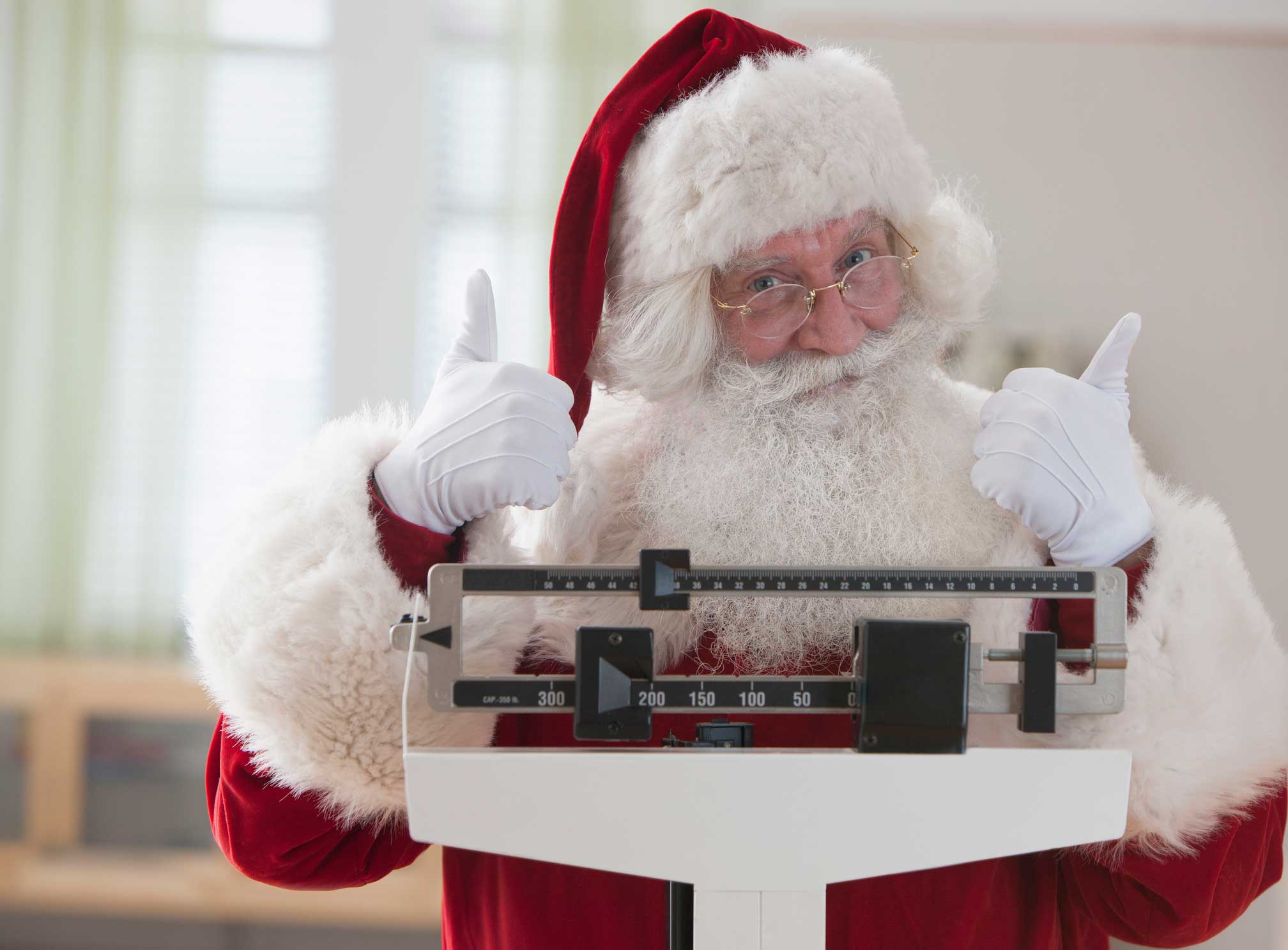
Is Santa a peril to our children’s health?
According to the Centers for Disease Control and Prevention, obesity rates in the US have more than tripled since the 1970s. Today, approximately one in five school-aged children (ages 6 to 19) has obesity.
The obesity-related co-morbidities affect the health of these children who may exhibit diabetes, hypertension and other metabolic diseases. The extra weight also poses a huge toll on children’s emotional health, confidence and self-esteem. A focus on childhood obesity the past few years has helped educate children on healthier food choices and make some of these healthier foods available in school cafeterias.
Children adopt most of their food choices from their experiences at home and school. We need role models to inspire our children to follow a healthy lifestyle. Here’s the question that comes to mind these days: Is Santa a good dietary role model for our children?
Santa has been depicted with a variety degrees of obesity that range from mild to severe. Always jolly, with rosy cheeks, expecting to eat cookies at every home he visits. Some believe that the current figure of Santa is a creation of an illustrator hired by Coca-Cola in the 1930s for its holiday marketing campaign. Others claim that the image of Santa was already standardized before the Coca-Cola ad. The truth is that Coca-Cola popularized the modern image of Santa, and cemented it in the Western culture. It was possibly an influence of the Renaissance, when health, beauty and socioeconomic status were synonymous with extra inches in the waistline.
Whatever the reason for Santa’s obesity, millions of children look up to this unique superhero who looks very different from all the other ones. And although there is no proven causality, some believe that there is an epidemiologic correlation between countries that worship Santa and childhood obesity!
It would be very simplistic to blame Santa for the obesity epidemic that threatens our children. Santa gives us an opportunit, though, to talk to our children about a healthier lifestyle and healthier food choices. We can start introducing the concept of food caloric value, caloric intake and expenditure. Make comparisons of caloric-dense foods like cookies, with less-caloric dense foods such as veggie sticks. Give examples on how much effort it takes to burn the calories that correspond to popular junk food. Explain why it is important to limit the amount, or substitute caloric-dense foods with healthier choices.
It would be hard to imagine Christmas without cookies, but we can teach our children how to make the cookies they leave for Santa next year healthier by making them smaller, decreasing the amount of sugar and butter they contain and replacing a portion of the butter with peanut butter, applesauce, mashed bananas, or other fruit purees. This is just one example of thousands on how to make smart food choices. It takes time, effort and resolution but it can be done.
As parents and society, we share responsibility for our children’s health and well-being. This includes providing them with a balanced, healthy, nutritious diet and opportunities to exercise. We need to help our children embrace the Ancient Greek proverb: “All things in good measure.” Instead of blaming Santa for our children’s obesity, we can use his obesity as a role model of someone who is trying to eat healthier. After all, Santa gave up smoking pipe. It’s now time that he goes on a diet.
Dr. Pavlos K. Papasavas is the Director of Surgical Research and Co-Director of Metabolic and Bariatric Surgery at Hartford Hospital.


